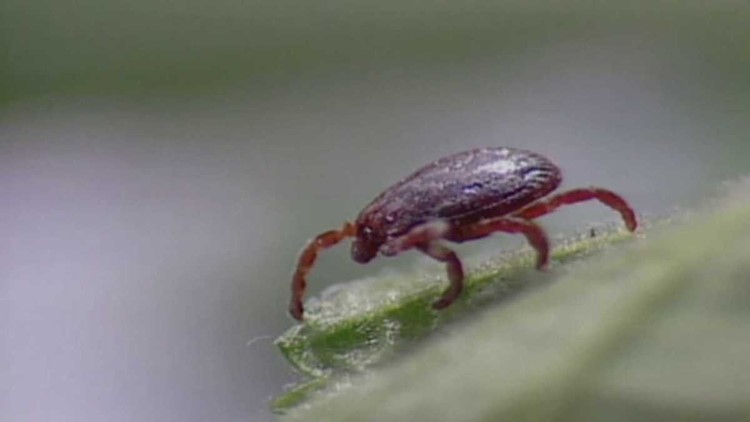A new culprit behind Lyme disease has been discovered, and it can cause even nastier symptoms than its predecessor.
Until now, scientists thought that the tick-borne illness was caused by only one species of bacteria, called Borrelia burgdorferi. But scientists from the U.S. Centers for Disease Control and Prevention and the Mayo Clinic have discovered a second, related species of bacteria, Borrelia mayonii, that can infect people bitten by the black-legged deer tick.
The report, published in The Lancet Infectious Diseases, says the new bacteria causes similar symptoms in the early stage of infection, such as fever, headache, rash, and neck pain. Arthritis can set in weeks later.
But unlike B. burgdorferi, B. mayonii can inflict nausea and vomiting, as well. It also may cause a diffuse rash, different from the telltale “bull’s-eye” rash doctors peg to the original Lyme infection.
“One patient’s father said his son looked like a Dalmatian because of the spots all over him,” said study author Dr. Bobbi Pritt, a medical director in the division of clinical microbiology at the Mayo Clinic, in Rochester, Minnesota.
Pritt told CBS News that two of the patients in their study experienced neurological symptoms, as well. “One patient had profound somnolence [sleepiness]. They were so zonked out they couldn’t be woken up. The other patient had vision disturbances, double vision,” she said.
The new bacteria species also leaves a higher concentration of bacteria in the blood, the researchers said.
Mayo scientists said they began suspecting the possibility of a new bacteria after lab tests from six patients with Lyme disease-like symptoms produced unusual results. Further genetic testing, in collaboration with CDC scientists, revealed that the new bacteria is closely related to the first one.
Each year, about 300,000 people in the U.S. are diagnosed with Lyme disease, according to the CDC. Most cases are concentrated in the Northeast and upper Midwest.
The new Lyme-linked species so far only appears to be a risk to tick-bite sufferers in the upper Midwest, including Minnesota and Wisconsin, the scientists report.
Dr. Jeannine Petersen, a microbiologist with the Centers for Disease Control and Prevention, and a study co-author, told CBS News, “At this time there is no evidence that B. mayonii is present outside of the Upper Midwest. However, people who live in areas where black-legged ticks are common should continue to take precautions.”
Petersen added, “While we’ve discovered a new bacteria that causes Lyme disease in the United States, the good news is that current tests and treatment for Lyme disease also appear to be effective for this new bacteria.”
Doctors can test for Lyme disease using a special blood test, said Pritt. The typical treatment is a course of antibiotics. She said most symptoms can be relieved with early treatment, though one patient in their study continues to grapple with ongoing joint pain.
The CDC has initiated a project to detect and characterize species of bacteria in specimens from patients suspected of tick-borne illnesses, Petersen said. Over the next several years, scientists aim to test as many as 30,000 patient samples to gain more information.
“We plan to continue collaborating with Mayo clinic and state health departments in the Upper Midwest to find more patients infected with this bacteria, to look for additional areas where infected ticks live, and to identify other bacteria that can cause tick-borne disease,” Petersen said.
Pritt said of the new Lyme infection, “As far as we know, it’s emerging, but we can’t say for sure it wasn’t here before.”
She hopes their study will encourage doctors and patients to be more aware of Lyme disease symptoms that aren’t typical.
The CDC recommends hikers reduce their risk of tick-borne infections by avoiding woody and brushy areas with high grass, walking in the center of trails, using insect repellents with DEET or permethrin, and wearing protective clothing.



